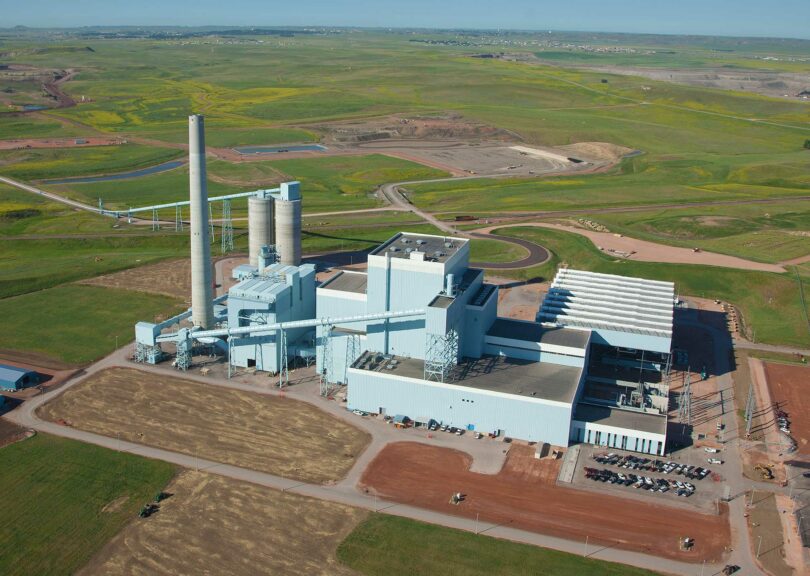By Paul Wesslund
What if instead of letting greenhouse gases escape from power plants, you could grab that carbon dioxide before it even reaches the atmosphere?
It’s a simple idea that’s getting a lot more attention as concerns grow over the effects of burning fossil fuels that power many industries and generate a large share of the nation’s electricity. This idea has a name: carbon capture — two words that have created a whole new set of jargon within the energy industry.
Carbon capture is an expensive and complicated idea to turn into widespread reality. But understanding some of the terminology associated with this complex process can shed light on this unique way of managing greenhouse gases. Let’s take a closer look at three key terms related to carbon capture:
FIRST KEY TERM: NET ZERO
You’ve likely heard the term net zero. This means you don’t increase the amount of CO2 in the atmosphere — essentially, any greenhouse gas you emit is reduced in some other way.
Net zero typically takes the form of a nation or commercial business setting a goal to offset carbon emissions it produces from burning coal, oil or natural gas. Those offsets can be as simple as planting lots of trees that convert CO2 to oxygen as part of their photosynthesis process.
Or it can be as complex as building hi-tech equipment to remove greenhouse gases before they reach the air or even after they are emitted. Furthermore, some industries intend to pursue electrification of their operations, which would have profound impacts on electric cooperatives and other electric utilities.
Net zero was first widely discussed about 10 years ago, when countries met to negotiate the Paris Climate Agreement and determine language to discuss reducing greenhouse gas emissions. Since then, nearly 500 nations, cities and states, and more than 700 companies have set goals of reaching net zero within the next 30 years.
Another term for net zero is “carbon neutral.” In 2020, the Microsoft Corporation announced a goal of going carbon negative, meaning it would remove more greenhouse gas from the air than it emits. And in 2021, the U.S. Department of Energy announced the Carbon Negative Shot, an initiative to remove CO2 directly from the atmosphere. It’s a call for innovation in CO2 removal pathways and storage.
SECOND KEY TERM: CCUS
Carbon capture, utilization and storage is one tool for reaching net zero. In the past, it was simply called “carbon capture,” but it is now often referred to as CCUS.
Nearly 50 years ago, the idea of preventing CO2 from being released into the atmosphere started when CO2 in natural gas wells was captured and then reinjected underground to boost production from oil wells.
As concerns grew about the effects of greenhouse gas, researchers started exploring technology that would remove CO2 from coal power plant exhaust, then permanently store it in underground rock formations, adding the word “storage.”
The word “utilization” became another part of the phrase as efforts grew to find other uses for the carbon dioxide, particularly to make cement and other building materials.
CCUS has been criticized by some as being very expensive and as a distraction from a goal of replacing fossil fuels with renewable energy. However, with projections showing that even by 2050 nearly half the electricity in the U.S. will still be generated by coal or natural gas, a recent federal report says that “CCUS has a critical role to play in decarbonizing the global economy.”
The 2021 federal infrastructure law includes some $12 billion for CCUS development as well as potentially lucrative tax credits such as Section 45Q carbon sequestration incentives.
Breaking Down CCUS
Carbon capture, utilization and storage, also known as CCUS, is a complex process that aims to capture carbon dioxide that is emitted during the burning of fossil fuels or other industrial activities. Through CCUS, CO2 can potentially be recycled or stored to prevent emissions from reaching the atmosphere.
CAPTURE: CO2 is separated from other gases produced during industrial processes, including natural gas- and coal-fired power generation plants or steel or cement factories.
UTILIZATION: CO2 can potentially be utilized to create economically valuable products, including building materials, fertilizers and plastics.
STORAGE: CO2 can be injected into geologic formations, including oil and gas reservoirs, unmineable coal seams and deep saline reservoirs — structures that have stored crude oil, natural gas, brine and CO2 over millions of years. The CO2 is stored permanently and safely.
THIRD KEY TERM: CARBON DIOXIDE REMOVAL
Carbon dioxide removal doesn’t center on keeping greenhouse gas from entering the atmosphere, but rather taking it out of the air. It’s also often referred to as direct air capture. This is playing out across the world and in Colorado.
Global Thermostat cut the ribbon in early April for a DAC machine in Brighton that the company says can draw about 1,000 tons of CO2 out of the atmosphere each year. The machine works by using large fans to pull in air, which passes through proprietary contactors containing carbon-absorbing sorbents. The honeycomb-shaped material containing the sorbents lines the walls of the machine, and low-temperature heat releases the CO2 to isolate it.
There’s no denying the drive toward reducing carbon emissions and increasing electrification across the economy. It will require a variety of approaches, including innovative carbon capture equipment, reforestation and energy efficiency.
Paul Wesslund writes on consumer and cooperative affairs for the National Rural Electric Cooperative Association, the national trade association representing more than 900 local electric cooperatives.

